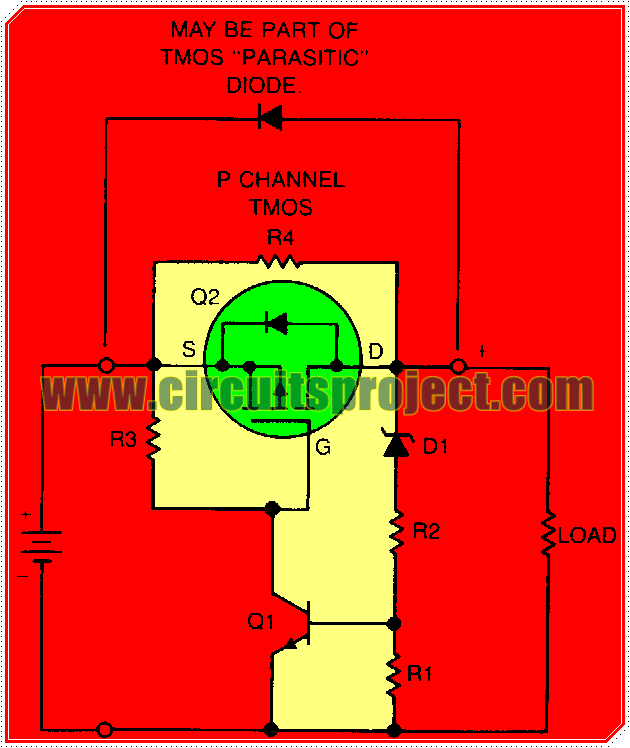This is a simple Project of Nicad Battery Protection Circuit Diagram. If a NiCad battery is discharged to a point at which the lowest capacity cell becomes fully discharged and reverses polarity, that cell will usually short internally and become unusable.
To prevent this type of damage, this circuit detects a one-cell drop of 1.25 V and turns the load off before cell reversal can occur. Low-current zener or other voltage sensor Dl and resistors Rl and R2 establish a reference level for transistor Ql. These resistors bias the zener to a few microamperes above its `knee.` Therefore, if battery voltage falls more than 1.25 V, Ql turns off, turning off Q2, and disconnecting the load.
Nicad Battery Protection Circuit Diagram

After the load is disconnected, if the battery returns to nominal voltage, the high value of resistor shunting Q2 provides enough output voltage to reset the voltage sensor and turn Q2 back on. If desirable, shunt diode D2 or the parasitic diode of the TMOS device, if suitable, allows the battery to be charged from the load terminals. The protection circuit presents a shunt current of only 10 mA at nominal battery voltage, which is low relative to the internal leakage of the batteries.
Comments
Post a Comment